Every weekend, hordes of people make their way up from Taipei and farther parts of the country to take in the wonders of Yehliu (野柳) and Fulong Beach (福隆海灘). The northern coast’s dramatic scenery, which features beaches, bizarre rock formations and latticed rocky platforms that stretch out to sea, is nothing short of spectacular. About midway between the two destinations on Provincial Highway No. 2 lies one of the nicest yet often overlooked places in the region: Bitou Cape (鼻頭角).
Bitou Cape is an immensely varied strip of land that edges out into the sea at Taiwan’s northeastern corner. There are extraordinary coastal views, a rich diversity of plants and animals, rock formations that would make a geologist go weak at the knees, and a pleasant, well-maintained hiking path from which to take it all in.
The Bitou Cape Trail (鼻頭角步道) begins just a few minutes’ walk south of the sleepy fishing town of Bitou; English and Chinese signs along the roadside point the way to the trailhead. The path skirts Bitou Elementary School (鼻頭國小) before winding its way through a dense mangrove forest. The area is crawling with wildlife, and you should easily spot several species of brightly colored butterflies, dragonflies and lizards. If you’re quiet and fortunate enough, you might also glimpse a squirrel or two scampering through the undergrowth.
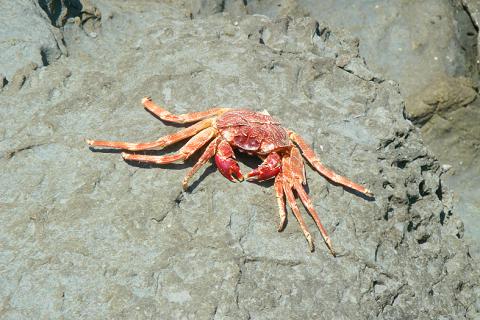
Photo: Andrew Crosthwaite
When you emerge into the open, you’re met with an invigorating blast of cool, salty sea air. And then there is the view. The cliffs at Bitou have borne the full brunt of the Pacific Ocean’s winds and waves, and are suitably rugged as a result. The hiking trail, which winds its way along the length of the cape, affords incredible views of steep rock faces that stand like sentinels against the mighty power of the sea. Toward the end of the trail, the path separates, and the lower route leads to Bitou’s picturesque lighthouse. The other path takes you to the end of the trail, where the land falls away in front and on either side of you. With 270 degrees of glorious sea to look at, you might have a difficult time turning around to head back down the path.
Another of Bitou’s features is the wide, wave-cut platform that lies at the base of the cliffs. The scoured and grooved surface of this massive, rocky terrace bears witness to the centuries of erosion that created it. There are many different minerals and types of rock in the area, and since some of them are much weaker than others, the weathering process has left its mark in a series of seemingly preternatural formations. Two of the most common are honeycomb rocks, with their many dimples and holes, and mushroom rocks, which have tops much larger than their bases.
Some people who visit Bitou prefer not to veer too far from the main hiking trail, but you should take the time to head down to the platform. The flights of stairs that take you there are not very long, and while it might not be safe to stand by the water’s edge, there’s no need to walk out that far. Even if you stay away from the sea end of the platform, it’s a great place to view marine life. The endless rock pools give shelter to a number of crab, shrimp and fish.
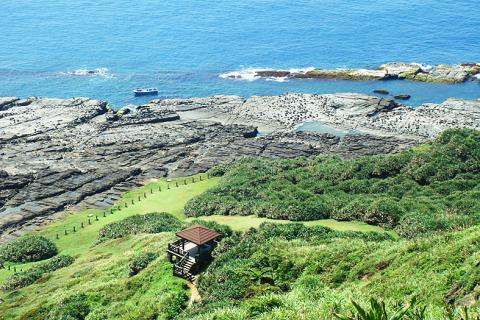
Photo: Andrew Crosthwaite
The Bitou Cape hiking trail isn’t especially long — just a few kilometers — and it’s well equipped with toilet blocks and rest stops, but it is still very exposed. If you come, especially if you’re with children, make sure you carry sunscreen, hats and plenty of water.
If you’re in need of cooling down after you’ve finished your hike, try the Bitou and Longdong Bay Geology Park (鼻頭龍洞地質公園). It’s about 500m south of the trailhead and has a marine swimming pool that is open to the sea except for a few large rocky outcrops jutting out of the water. There are lifeguards on duty, a smaller children’s play pool and plenty of space to lie back and soak up the sun. If you feel hungry, try the cafe in the park or head back to Bitou for some freshly caught seafood at one of the inexpensive restaurants next to the sea. The town’s harbor is always pretty, but if you happen to see it filled with blue and white fishing vessels, you should count yourself lucky because this is when it’s at its most charming.
Bitou proves the old saying that good things come in small packages. I can’t think of many better places to spend a day by the sea.
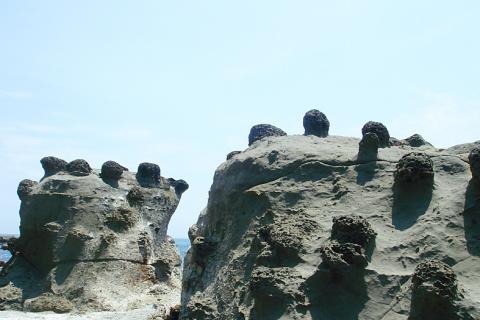
Photo: Andrew Crosthwaite
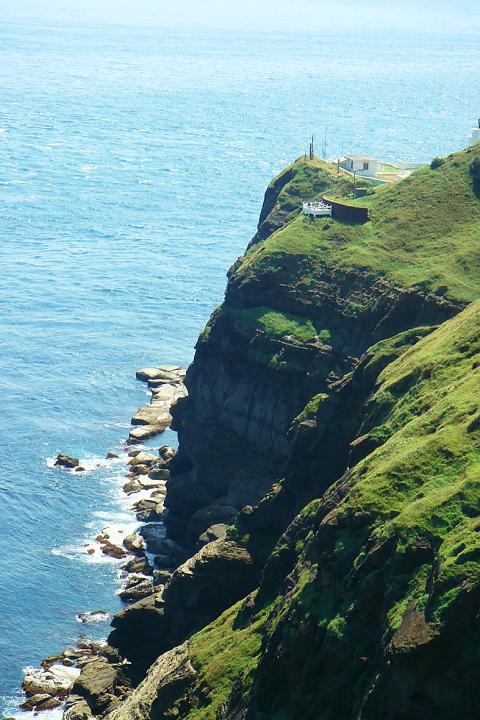
Photo: Andrew Crosthwaite
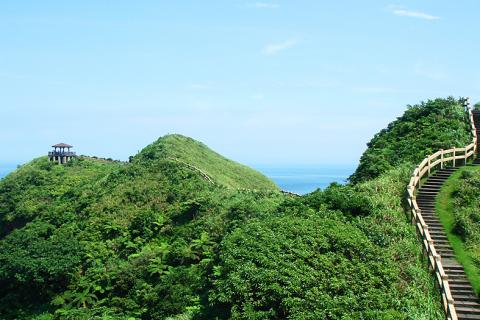
Photo: Andrew Crosthwaite
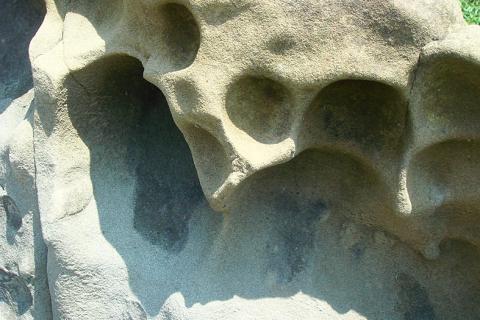
Photo: Andrew Crosthwaite
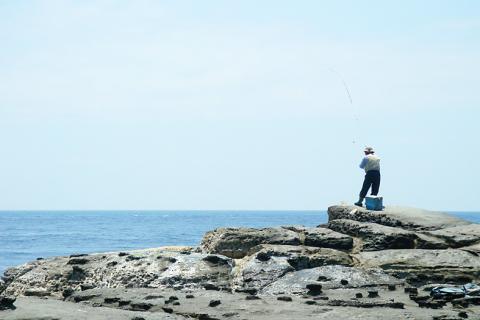
Photo: Andrew Crosthwaite

Photo: Andrew Crosthwaite

Photo: Andrew Crosthwaite

This month the government ordered a one-year block of Xiaohongshu (小紅書) or Rednote, a Chinese social media platform with more than 3 million users in Taiwan. The government pointed to widespread fraud activity on the platform, along with cybersecurity failures. Officials said that they had reached out to the company and asked it to change. However, they received no response. The pro-China parties, the Chinese Nationalist Party (KMT) and Taiwan People’s Party (TPP), immediately swung into action, denouncing the ban as an attack on free speech. This “free speech” claim was then echoed by the People’s Republic of China (PRC),

Exceptions to the rule are sometimes revealing. For a brief few years, there was an emerging ideological split between the Democratic Progressive Party (DPP) and Chinese Nationalist Party (KMT) that appeared to be pushing the DPP in a direction that would be considered more liberal, and the KMT more conservative. In the previous column, “The KMT-DPP’s bureaucrat-led developmental state” (Dec. 11, page 12), we examined how Taiwan’s democratic system developed, and how both the two main parties largely accepted a similar consensus on how Taiwan should be run domestically and did not split along the left-right lines more familiar in

Specialty sandwiches loaded with the contents of an entire charcuterie board, overflowing with sauces, creams and all manner of creative add-ons, is perhaps one of the biggest global food trends of this year. From London to New York, lines form down the block for mortadella, burrata, pistachio and more stuffed between slices of fresh sourdough, rye or focaccia. To try the trend in Taipei, Munchies Mafia is for sure the spot — could this be the best sandwich in town? Carlos from Spain and Sergio from Mexico opened this spot just seven months ago. The two met working in the

Many people in Taiwan first learned about universal basic income (UBI) — the idea that the government should provide regular, no-strings-attached payments to each citizen — in 2019. While seeking the Democratic nomination for the 2020 US presidential election, Andrew Yang, a politician of Taiwanese descent, said that, if elected, he’d institute a UBI of US$1,000 per month to “get the economic boot off of people’s throats, allowing them to lift their heads up, breathe, and get excited for the future.” His campaign petered out, but the concept of UBI hasn’t gone away. Throughout the industrialized world, there are fears that